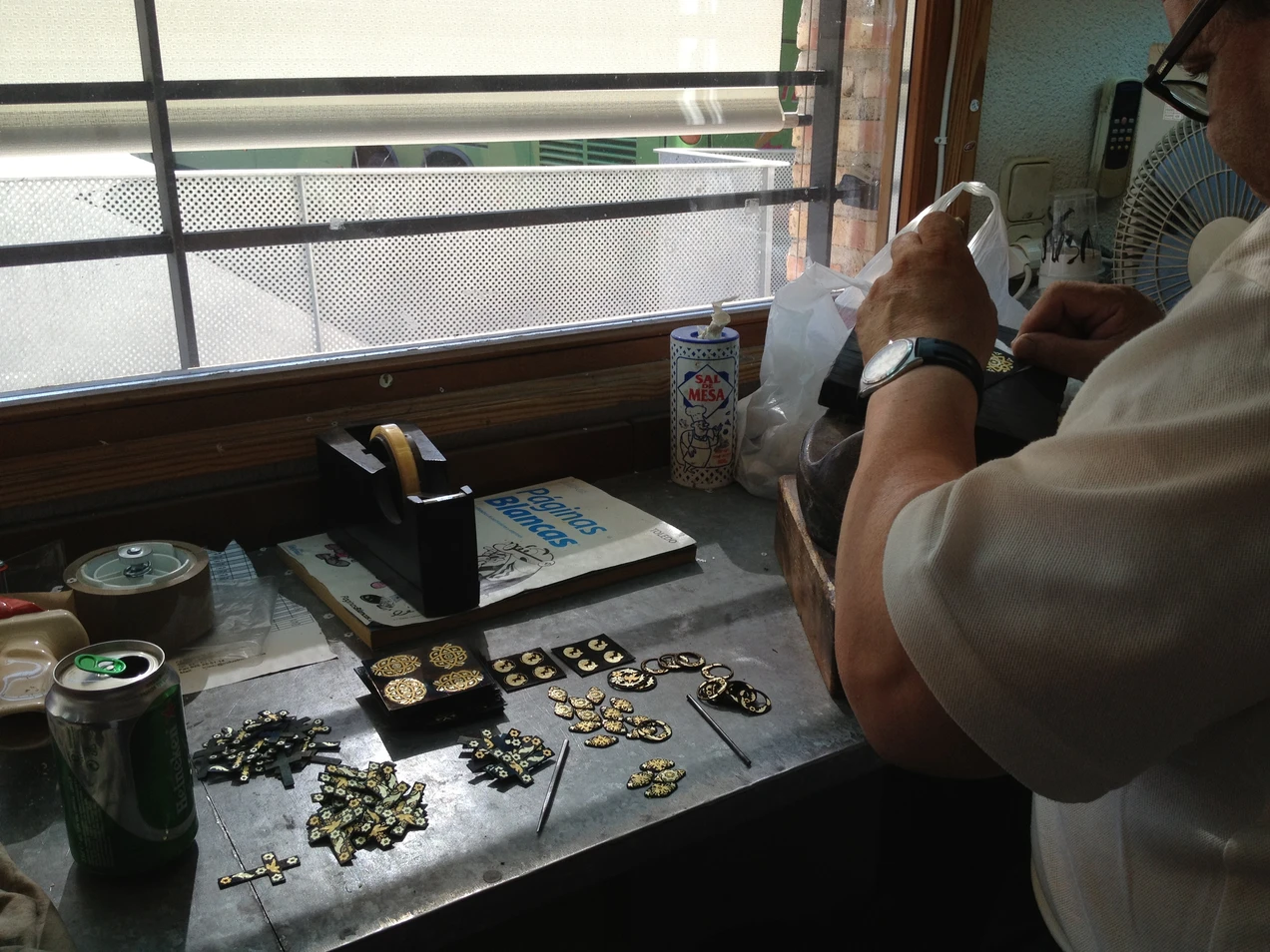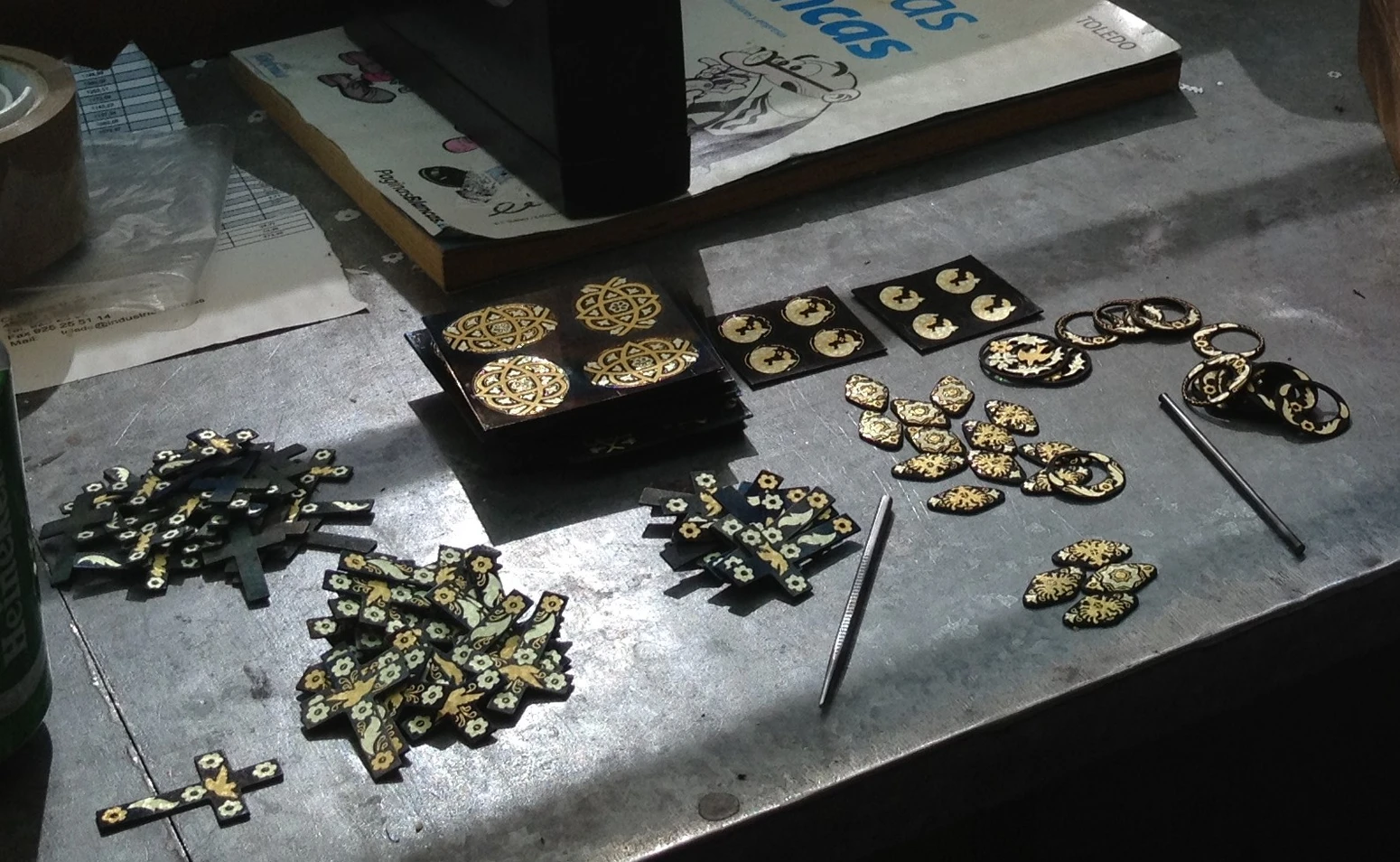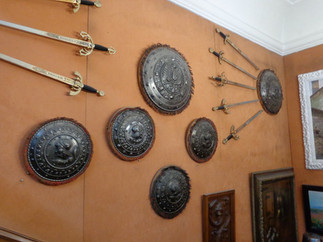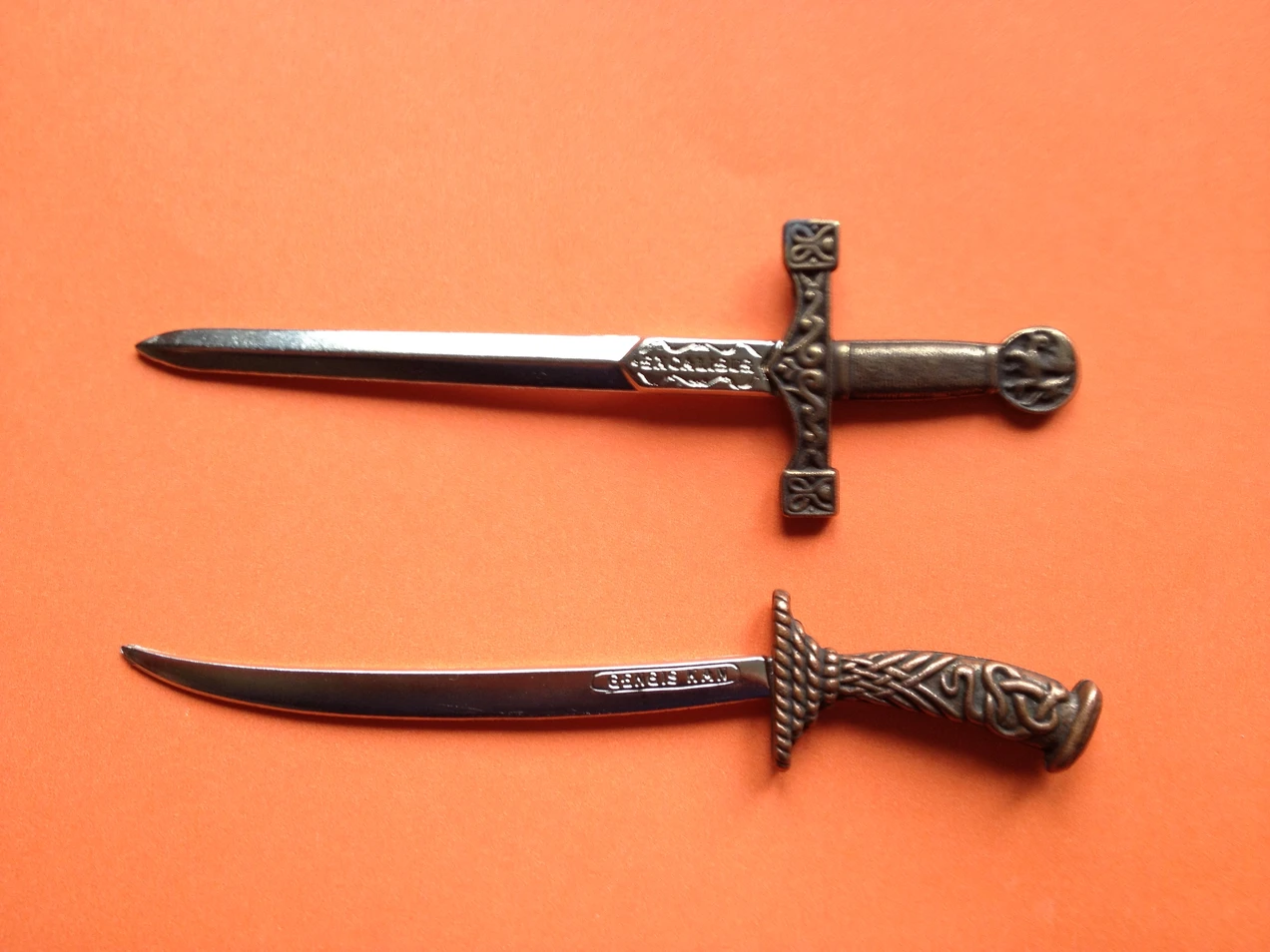The Swords, Shields, and Damascene Art of Toledo
- AMCL Schatz

- Aug 5, 2023
- 3 min read
As our tour guide promised, he took us to Damasquinados Suarez to get authentic and quality Toledo damascene souvenirs. He explained that damascene is the ancient Moorish craft of laying gold, silver, or copper threads on non-precious metals like iron and steel. These are then fired so that the underlying metal oxidizes and becomes black, leaving the gold to stand out in sharp contrast.
The craft is believed to have its roots in the oriental-style craft work in Damascus and Syria. The Arabs perfected the skill and brought it to Spain where it has remained to this day, with Toledo being the main centre of damascene production.
We were led into a workshop where a craftsman demonstrated how it is done. We watched him as he inlayed gold threads into patterns deeply engraved in round steel buttons. There are two types of patterns – Renaissance (with flowers or birds) and Arabesque (with geometric patterns). He pressed the gold threads into the grooves, hammered the gold, and treated it with a solution to start the oxidation process. Some of us were even invited to "help" with the hammering.
We saw the finished products in the showroom where a wide-range of damascene jewelry were on display. This is the commercial part of the tour, but I didn’t mind this at all. Compared to the knock-off wares sold at the roadside tourist centre where we were brought earlier, these were real artisanal products.
Aside from jewelry, there were also damascene plates and other decorative pieces. The products varied in price range - affordable, moderate and expensive. I am not much of a jewelry person, and the decor items were bulky, so I was just happy to look at and admire the exquisite pieces.
The former fencer in me, however, got attracted to the swords, knives, and shields, which were also handcrafted by their artisans. I lost my fencing foil back home (actually stolen by an apartment tenant), but the swords on display there were the real stuff for combat.
As I could not take home a real sword, I opted for miniature swords that were on sale at the time of my visit. There were so many choices - medieval, fantasy, and legendary ones, but I got only two – a miniature version of King Arthur’s Excalibur, and of Genghis Khan’s sword that I could use as letter openers. I looked for a sword magnet, or even a damascene button magnet, but there was none.
While I was paying for my souvenirs, my Pakistani tour mate, who had been volunteering as partial photographer for me and a Brazilian lady whom we also met on this tour, came by and asked me if I had found anything interesting. I showed him my miniature swords and his face lit up. He said that his two pre-teen sons love all things "knightly" and maybe he should buy the same for them. I mentioned there were sets available, complete with either a sword stand, a wall plaque, or a display case with a shield, and immediately showed him where I found them. I did not get them for myself because they were kind of expensive for my budget, too bulky for my luggage, and a little too much for what I needed. But it was not the case for him.
He ended up buying two sets of medium-sized miniature swords arranged on a wooden shield in a circular pattern. The first collection included replicas of Excalibur and the swords of famous historical heroes like El Cid, Charlemagne, Attila the Hun, Alexander the Great, Richard the Lion Heart, King Solomon, and the Round-Table knights. The second one included those of Conan the Barbarian, Xena the Warrior Princess, Odin, Robinhood, and Don Quixote, as well as Templar, pirate, and gladiator swords. I was as much excited for his haul as he was.
He thanked me for giving him this brilliant idea. He could not take home a dozen swords, but with these miniature ones, he could have them all. He said these would be perfect as decorations for his sons' King Arthur-themed room, but I suspected he would keep the other set for himself, based on his enthusiasm.
Toledo is indeed the place for swordsmen-wanna-bes like us and will, for sure, fulfill every child and child-at-heart's knightly fantasies.








































Comments